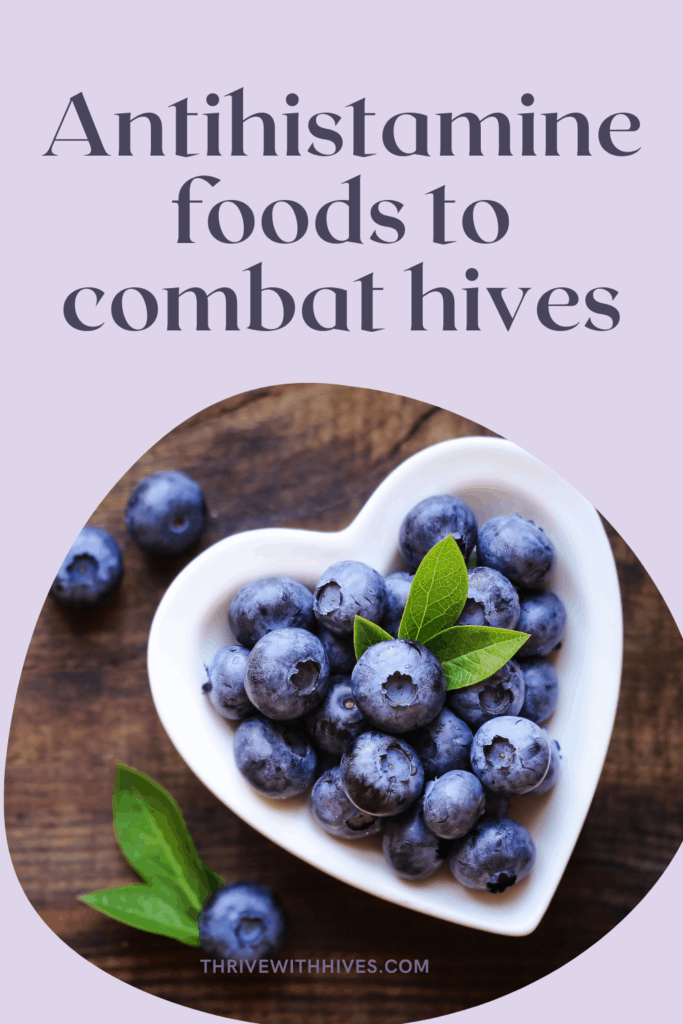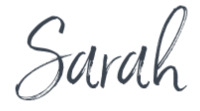Antihistamine Foods to Combat Hives
Chronic Urticaria is a disorder of the immune system where your mast cells release an overabundance of histamine. To combat symptoms, we often turn to over-the-counter antihistamines. However, many of us have found that long-term use of antihistamines and other medications can have undesirable side effects. We start to look for alternative ways to manage our condition.
Here are some antihistamine foods to try to incorporate into your routine. Don’t forget to check with your doctor or nutritionist before making changes.
I am not a physician, and nothing on this blog is medical advice. This blog is a general overview of my personal research and experience. As always, you should check with your physician before making any changes to your treatment plan.

Quercetin
How can Quercetin help hives?
One way that many have found helpful in reducing flares is the flavonoid Quercetin. You have likely heard of this as a supplement if you have been active in Chronic Urticaria support groups.
Quercetin is a powerful antioxidant found in plants that assists your body in ridding itself of free radicals, lowers inflammation, and helps stabilize mast cells. Quercetin can inhibit histamine release, making it an excellent natural antihistamine. It has even been shown to block anaphylaxis in mice studies. You can read more about Quercetin as an antihistamine HERE.
Quercetin has also been shown to help prevent cancer, heart disease, and Alzheimer’s, and foods containing this antioxidant are also prebiotics, which may help improve gut health. Since poor gut health has often been associated with Chronic Hives, this is a win-win.
What foods contain Quercetin?
- Red Onions
- Black Grapes
- Broccoli
- Apples
- Cranberries
- Blueberries
- Blackberries
- Cherries
- Tomatoes*
- Cabbage
- Cilantro
- Black Tea
- Asparagus
- Red leaf lettuce
- Kale
- *Although high in the flavonoid Quercetin, these foods are considered high histamine and should be avoided on a low histamine diet*
Cooking reduces the Quercetin content, so it’s best to eat these foods without heating.
My favorite way to get high amounts of nutrients is by juicing. Juicing allows you to get more of the available nutrients as you are able to ingest a lot more. You can use the pulp in cooking, freeze for later if needed.
You can also add these foods to smoothies or incorporate a salad with high Quercetin foods.
Limiting high histamine foods
While we want to add in more high anti-inflammatories, Quercetin-rich foods, we also want to avoid those with high histamines. On the list above, the foods with an asterisk* should generally be avoided in a low histamine diet.
Here is a great list of foods to avoid for a low histamine diet.
Stinging Nettle
Stinging nettle is a common weed with some surprising benefits. It is high in nutrients such as iron. Nettles have been used to treat arthritis and seasonal allergies.
It has “stinging” hairs, but when cooked, they are softened and no longer sting. You can make a saute using the nettles to incorporate into your diet.
You can also drink Nettle Tea like this one.
Turmeric
I love turmeric! I talk about turmeric all the time, and that’s because it has so many great benefits, and I love the taste too.
Turmeric is a natural antihistamine and anti-inflammatory. Not only can it potentially help stabilize mast cells, but it can ease your pain as well.
Add it to your cooking, juice it and freeze in an ice cube tray for “shots,” or drink turmeric tea.
Ginger
Ginger is another great antihistamine with anti-inflammatory and antioxidant properties as well.
Add it in your cooking or juice it and freeze in ice cube trays for ginger “shots”. I also like to drink Ginger tea.
Garlic
Ah, one of the few that you won’t see me recommend as a tea! But garlic is so tasty when added to your cooking. Some people even crush garlic and put it in hot water with honey and drink it like tea. This one isn’t for me but who knows, you might like it.
Garlic is naturally rich in Vitamin C, which has been shown to reduce mast cell degranulation. It is also a great anti-inflammatory and antioxidant.
Vitamin C
Vitamin C is often recommended if you have Chronic Urticaria, but it can be hard to get enough. If you have histamine intolerance, you may be avoiding citrus fruits, which are known for their high vitamin C content.
You can still find many high Vitamin C containing foods such as:
- Kale*
- Dandelion greens
- Broccoli*
- Brussel sprouts
*Also high in Quercetin
Of course, you can always supplement, but when you have Chronic Urticaria, you often don’t know what you will tolerate, and some fillers can cause flares. Always proceed with caution when using supplements, and don’t forget to check in with your pharmacist before adding any herbal supplements.
Diet is never a one size fits all solution, and we all have to find what works for us. Incorporating some of these highly nutritious antihistamine foods is a great place to start if you want to restore balance in your body.
